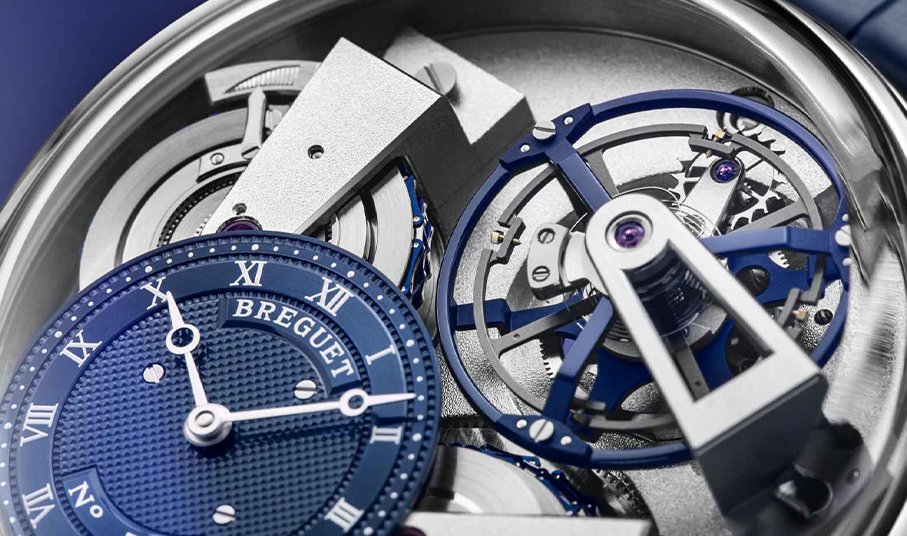A Look at Breguet’s History With Tourbillon Timepieces
We look at a recent release from Breguet, the inventor of the tourbillon, to show why tourbillons remain fascinating more than 200 years after their creation.
We look at a recent release from Breguet, the inventor of the tourbillon, to show why tourbillons remain fascinating more than 200 years after their creation.

For centuries, the tourbillon (French for whirlwind) has fascinated both watchmakers and watch lovers. A tourbillon is a hypnotic addition to a watch movement in which a tourbillon carriage encloses the beating heart of the movement, the balance wheel, and rotates 360 degrees, usually making a full rotation once every minute. Watching the balance wheel oscillate back and forth while turning in a circle is mesmerizing. But, as beautiful as they are, tourbillons can be confusing.
So, what does a tourbillon do other than captivate the viewer? It helps to negate the negative impact of gravity on a watch’s accuracy. In the 18th century, men wore pocket watches, which they kept in vertical positions in their jackets. In this position, gravity would pull down on the balance spring, which created a ripple effect that slowed down the movement’s timekeeping.
Abraham-Louis Breguet was a visionary and one of the most important watchmakers of the 18th century. He discovered that by putting the balance wheel inside a spinning cage, the balance spring would never be in a single position long enough for gravity to have an impact on the watch’s accuracy. Breguet patented the tourbillon just after the turn of the century in 1801, solving one of horology’s thorniest problems in an elegant way.

Of course, today, we tell the time on our wrists, which move about and aren’t frequently in a single position for an extended period of time. This means that a tourbillon is no longer necessary to ensure precision. However, brands still create them to show their skill - for the most part, only the top watchmakers can create a tourbillon.
Since they are a time-consuming, technical challenge to make, tourbillon watches command high prices. Brands also frequently reserve tourbillons for some of their most complicated watches and use materials crafted from precious metals.
Some facinating examples of a tourbillon from top watchmakers in recent years include the Cabaret Tourbillon from A. Lange & Söhne, the Altiplano Tourbillon by Piaget and perhaps the most striking of all, Vacheron Constantin's Armillary Tourbillon Perpetual Calendar

Since its founder invented the tourbillon, it’s only fitting that Breguet would produce exceptional examples. The new Tradition 7047 Tourbillon Waltz adds a fusée-chain system to the tourbillon. As tourbillons are in constant motion, they require a lot of power to operate. As in all watches, accuracy can decrease as the power reserve dwindles.
The fusée-chain tourbillon transmission device provides constant torque to the tourbillon, no matter the level of power left in the movement. This keeps the tourbillon just as precise when the watch is on its last hours of power reserve as it is when it is fully wound.
The watch comes in a 41mm platinum case with a striking dial highlighting many of Breguet’s design codes. The tourbillon and the dial are both off-centered. The tourbillon is at 1 o’clock, an unusual position for a tourbillon. The dial is off-centered at 7 o’clock and has a Clous de Paris guilloché motif, another hallmark of Breguet.

The chain links are visible at 5 o’clock. Both the tourbillon carriage and chain links are thermally blued to complement the dial, and the watch comes with a matching blue alligator strap. The careful craftsmanship exhibited here makes this standout from other tourbillon timepieces.
There’s no doubt that the tourbillon isn’t as functionally relevant as it was at the time of its invention. However, the allure of its movement, the breathtaking beauty of the most exquisite examples from different icons of horology, and the intrigue of the science behind it will keep it a favorite in the eyes of watch lovers for the foreseeable future.